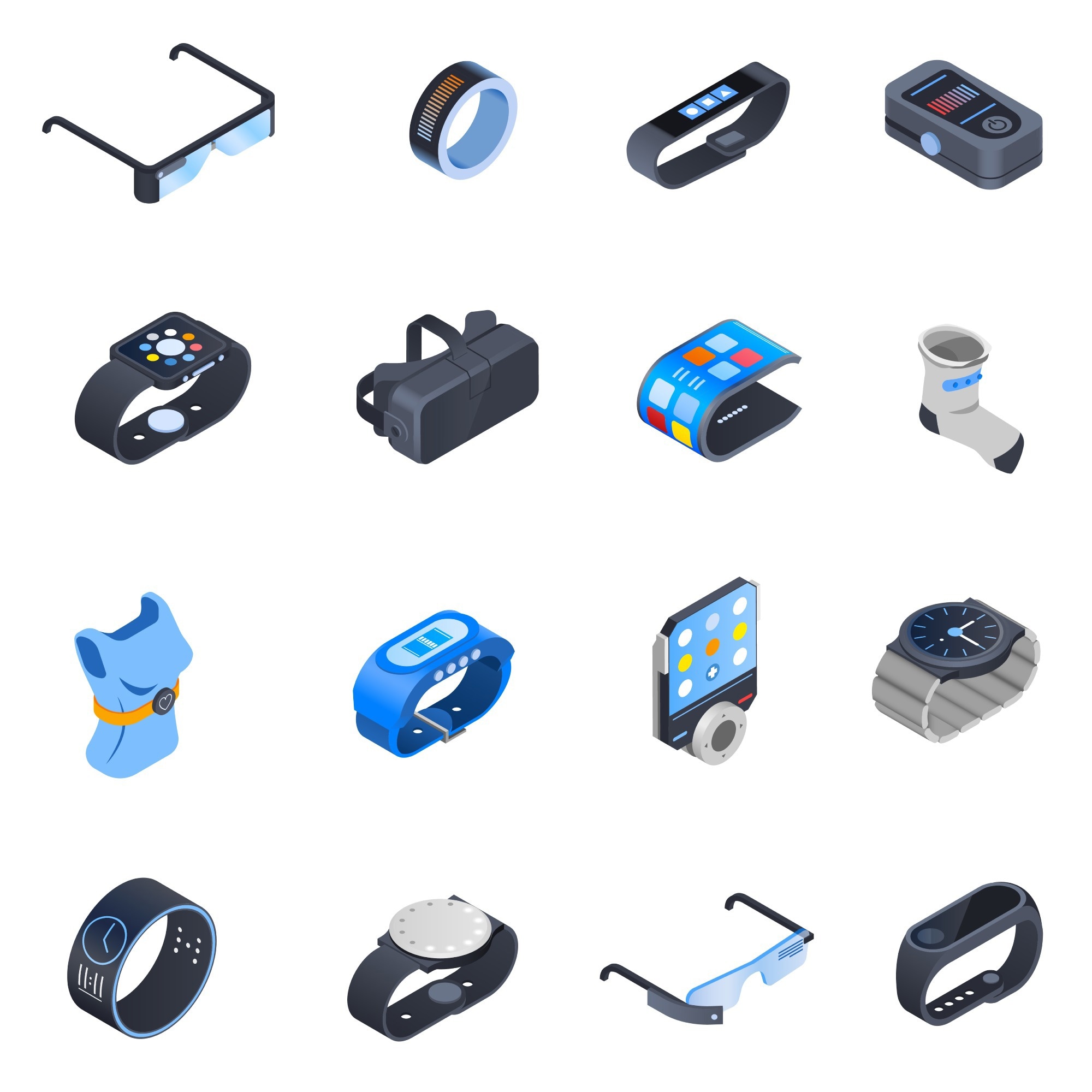The wearable electronics market is expanding rapidly, with an ever-increasing range of applications in industry, health, personal fitness, training and coaching, professional sports, research, and education. While batteries are the most popular power source for this new technological mode, constant, passive power from natural sources may hold the key to unlocking wearables’ full potential. One natural energy source is a prime candidate for this task: the heat produced by our bodies.

Image Credit: Macrovector/Shutterstock.com
Moving Wearables On Without Batteries
Wearable electronic devices are all around us today. Smart watches, tags, and sports tracking equipment are regular consumer technology products available in markets around the world.
These devices are becoming more functional with new generations of technology. As a result, their power demands are increasing. However, the battery systems that wearables commonly run on require frequent charges which can interrupt their purpose and even the activity they are designed to support.
They also need to support recharging connections, often with cumbersome networks of internal and external wiring, or delicate, proprietary charging systems.
A number of integrated energy harvesting technologies are currently being developed to power the wearable electronics of the future. These include systems based on solar energy, triboelectricity, and even biofuel cells that use the body’s own microbial processes.
A widely used method for making wearables self-sustainable is power generation with thermoelectric generators (TEGs). TEG devices can make electric power from waste heat: they do not need emitted, directed heat like steam engines do for example.
Wearable electronics powered by TEGs can enable constant, uninterrupted monitoring when in use. This provides significant benefits, especially in health and research applications. Unobtrusive, continuous, smart, passive sensing is also fairly valuable for personal training and professional sports applications.
How TEG Wearables Work
TEGs work in any situation where there is a difference in temperature because they manipulate the Seebeck effect to convert temperature changes into electrical energy.
The Seebeck effect produces a voltage difference between two semiconductors that are different temperatures. This creates a flow of current across the semiconductors, which can be harnessed into electrical power by TEGs.
There are a number of different geometries and architectures proposed for TEG-powered wearable electronics.
An illustrative one of these is made from a thermoelectric plate, two polydimethylsiloxane (PDMS) plates and two semiconductors, and aluminum oxide ceramic heads. The thermoelectric plate is placed between the two PDMS plates, which act as insulators to reduce the amount of heat lost in the transfer stage. There is a heat spreader attached to one side of the device.
The semiconductors make a thermoelectric pair with one n-type (negative) semiconductor and one p-type (positive) semiconductor. The aluminum oxide ceramic heads are layered outside of the semiconductors in the device.
Another copper heat spreader attaches to the bottom of the generator to dissipate heat and cool the device more rapidly. This part also means the device can work if worn on various parts of the human body.
Research into TEG-Powered Wearables
Designing TEG powered wearables remains a complicated engineering and manufacturing challenge. To make the TEG work as well as possible, the device needs to maximize the amount of temperature difference it can harvest as energy.
Extending the device’s surface area or loading the device with as many generators as possible can increase the energy available to the device, but they will tend to do so at the expense of form factor, comfort, and wearability. In other words, more power for more functionality comes at the expense of many of the key advantages of wearable electronic technology.
Cutting-edge research is currently underway to overcome this and other developmental challenges for what is still quite an immature technology.
For example, an international and interdisciplinary team led by scientists at the University of Colorado (UC) Boulder recently authored a report published in Applied Energy that demonstrates TEG-based wearables with “Lego-like reconfigurability.”
The device is flexible and stretches, and it can be recycled easily when it reaches the end of its service life. The team combined modular thermoelectric chips with dynamic covalent polyimine and liquid-metal electrical wiring to make the novel device.
It achieved a record for open circuit voltage in flexible TEGs, at 1 V/cm2 from a 95 K temperature difference. A wavelength-selected metamaterial film applied to the cold side of the TEG led to improved performance in outside conditions.
Will The Future of Wearable Electronics Be Body Heat Powered?
The direction of travel for TEG technology development remains promising, with researchers developing ever more efficient (and durable, reliable, and economical) devices every year.
Scientists are investigating nanomaterials and nanostructures that could become components of heat-powered wearables. Finding more cost-effective and scalable fabrication methods is another key research area. There is also still much room for improvement in device topology, encapsulation methods, and both electrical and thermal connections inside the devices.
One promising development is the new class of three-dimensional Bi2Te3 nanonetworks which provide high thermoelectric functionality alongside scalable manufacturing techniques in anodization and electrodeposition.
More from AZoM: What are Biopolymer-Based Hydrogel Electrolytes?
References and Further Reading
Hyland, M., et al (2016). Wearable thermoelectric generators for human body heat harvesting. Applied Energy. doi.org/10.1016/j.apenergy.2016.08.150.
Liu, J. et al (2017). Wearable Thermoelectric Generators Powered by Body Heat. [Online] HDIAC. Available at: https://hdiac.org/articles/wearable-thermoelectric-generators-powered-by-body-heat/ (Accessed on 12 September 2022).
Martín-González, M. and O. Caballero-Calero (2022). Thermoelectric generators as an alternative for reliable powering of wearable devices with wasted heat. Journal of Solid State Chemistry. doi.org/10.1016/j.jssc.2022.123543
Disclaimer: The views expressed here are those of the author expressed in their private capacity and do not necessarily represent the views of AZoM.com Limited T/A AZoNetwork the owner and operator of this website. This disclaimer forms part of the Terms and conditions of use of this website.